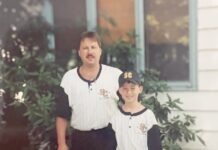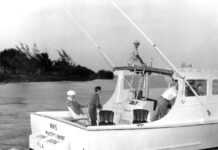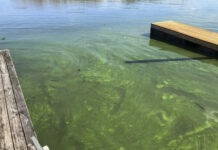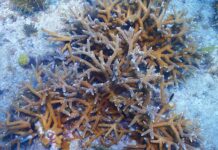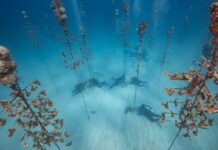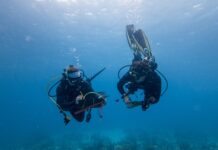
This is the 15th year of the Great Goliath Grouper Count, scheduled to take place June 1 through June 16.
The Great Goliath Grouper Count is a collaboration between Florida Sea Grant and the Florida Fish and Wildlife Conservation Commission. With help from recreational divers, information is collected on goliath grouper numbers, size class and locations in Florida.
During the first two weeks of June, trained recreational divers count goliath grouper at artificial reefs and wrecks. This is a cooperative research project between scientists and the recreational diving community to help obtain data to create a snapshot of how many goliath groupers there are around the state. Over the past 14 years, nearly 1,000 surveys have been submitted and divers have spent more than 470 hours under water looking for these very large groupers, which can grow up to 8 feet long and weigh more than 800 pounds.
Considering how large a goliath grouper can grow, they were historically easy to catch and spearfish. If you have ever dived with a goliath grouper you know it is not unusual for them to follow you around — it is very thrilling to be nose-to-nose with a 300-plus pound fish.
Unfortunately, overfishing became a problem and the goliath grouper closed to all harvest in 1990. Since spring 2023, there has been a very limited goliath harvest program in state waters with up to 200 permits available each year. The permits are awarded on a lottery basis following an application and fee.
More information on slot limits and closed areas is at myfwc.com. There is still no legal harvesting allowed in federal waters of the Gulf of Mexico or Atlantic Ocean.
The Great Goliath Grouper Count was established in part due to the difficulty to obtain stock assessment information on a species not being fished. There is no fisheries data collected when species aren’t harvested or possessed. Basically, the Great Goliath Grouper Count is a non-lethal way to collect goliath grouper data and the community is helping fish biologists measure their populations every June.
Goliath groupers spend their first five to six years of life in shallow waters associated with mangroves. The 10,000 islands in southwest Florida and the Everglades are very important juvenile habitats. Juveniles are especially vulnerable to cold snaps, marine heat waves and algal blooms like red tide, which have caused a lot of mortality. They mature at around 45 inches in length when they move offshore to coral reefs, wrecks and artificial reefs. They have a maximum known age of 37 years and very likely live to 50 or even 100.
A study by Florida State University found that 85 percent of their diet is crustaceans and the rest is mostly slow-moving fish, although they are opportunistic feeders and many have learned how to take an easy meal from anglers. Adult goliath groupers have small home ranges, and once they find a suitable spot they tend to stay there year-round until breeding season. Tagged goliath groupers are documented to swim 100 miles or more to spawning aggregations, where hundreds of individuals converge to mate.
Scan the QR code here for a training video for the count. You can also call 305-292-4502 or email shellykrueger@ufl.edu and I can teach you how to perform a roving dive, count the grouper you see and record the three size classes (0-3 feet, 3-5 feet, greater than 5 feet). Please reach out if you have any questions, need waterproof data sheets, or just want to chat about big fish.









